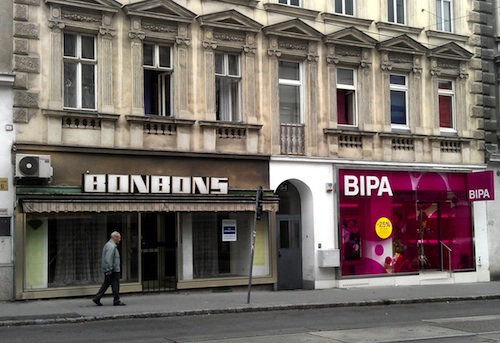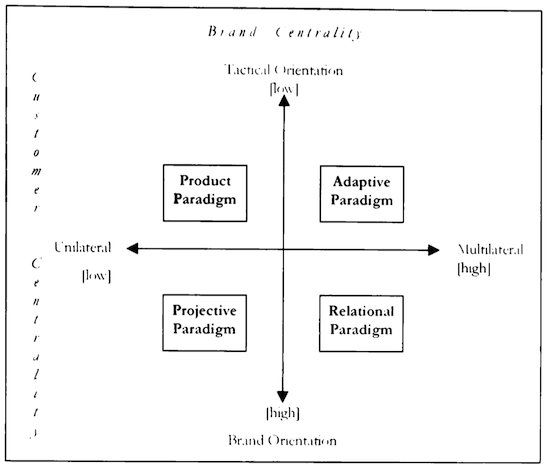This is the introduction to my bachelor thesis, which has the same title as this blog post. I thought I’d post it here, so that more than the two people grading it can read it and give feedback. I’ll probably also put the pdf online, but I want to layout it properly before doing that. You can see the table of contents here.
–
Creativity is an often used word in the context of marketing communications and brand management. There are magazines named after it, such as Creativity and Creative Review, there are numerous awards around the globe judging and celebrating it and there is the APG Creative Strategy award, which rewards creative strategy in the context of marketing communications and planning.
Creativity, of course, is also the selling point of almost every agency or agency-like company trying to make a living in the widening domain of marketing services.
“We put the creative function at the top of our priorities.” (Ogilvy & Mather 2010)
“Creativity Is The Most Powerful Force In Business. […] DDB’s pursues collaborative relationships with clients and partners to find the hidden potential of people, brands and business through creativity.” (DDB 2010)
“[Wieden + Kennedy is] an independent, creatively-led communications agency.” (Wieden + Kennedy 2010)
“We connect ideas and innovation to deliver award-winning results for the world’s leading brands.” (AKQA 2010)
„We are creative problem-solvers.” (Naked Communications 2010)
“We are a creative company with 186 offices and 7000 colleagues united around a single mission: To Resist the Unusual.” (Young & Rubicam 2010)
“Our industry is undergoing radical transformation. To keep pace with the changes being driven by emerging technology, it is vital to focus on collaboration, creativity and organizational flexibility.” (Brien 2010, McCann)
“Our philosophy emphasizes the utilization of strategy and creativity to drive growth and measurable impact.” (MDC Partners 2010)
Both independent agencies as well as large established agency networks claim to be at the forefront of creativity. More precisely, as Zurstiege (2005, p.179ff) puts it, what agencies aim to offer and what marketers ask for is effective creativity or creative effectiveness. Therefore, as the relationship between creativity and effectiveness is a regular topic of discussion between advertising agencies and clients, within agencies, the industry press and advertising conferences, there is a stream of research dealing with creativity in the context of advertising. Among the topics covered are the definition and perception of creativity (White & Smith 2001; West et al. 2008; El-Murad & West 2004; Koslow et al. 2003) the effect of creativity on advertising effectiveness (White & Smith 2001; Ehrenberg et al. 2002; Till & Baack 2005; Kover et al. 1995), and contextual issues that influence advertising and agency creativity (Koslow et al. 2006).
However, while creativity is the focus of awards, agency positioning and industry debates, and while there is work in advertising research towards “a general theory of creativity in advertising” (Smith & Yang 2004) the topic is generally not dealt with in detail in a broader marketing and brand management context. The seminal work of many leading scholars in this area (Kotler & Bliemel 2006; Fuchs & Unger 2007; Schweiger & Schrattenecker 2009) does not systematically cover creativity.
For this reason this paper sets out to critically evaluate the functions and premises of brand management and more specifically what “creativity” could mean in this context. This is done by first analysing the concept of brands and brand management as found in a literature review. In addition, the environment companies and brands operate in will be described and structured, followed by implications for brand management theory and practice. Then, meanings of creativity both in today’s advertising and marketing industry as well as in the broader management context will be examined. The last chapter will then merge the two streams and draw conclusions from the synthesis of the current state of brand management and a broader meaning of creativity in a commercial context.
—
AKQA, 2010. AKQA Fact Sheet. Available at: http://www.akqa.com/10_company/assets/pdf/AKQA_Fact_Sheet.pdf [Accessed October 22, 2010].
Brien, N., 2010. Interpublic Announces Management Succession at McCann Worldgroup. Available at: http://www.mccannworldgroup.com/2010/01/interpublic-announces-management-succession-at-mccann-worldgroup/ [Accessed October 22, 2010].
DDB, 2010. DDB. Available at: http://www.ddb.com/timeline.html [Accessed October 22, 2010].
Ehrenberg, A. et al., 2002. Brand advertising as creative publicity. Journal of Advertising Research, 42(4), pp.7–18.
El-Murad, J. & West, D.C., 2004. The Definition and Measurement of Creativity: What Do We Know? Journal of Advertising Research, 44(2), pp.188-201.
Fuchs, W. & Unger, F., 2007. Management der Marketing-Kommunikation 4th ed., Springer, Berlin.
Koslow, S., Sasser, S.L. & Riordan, E.A., 2006. Do Marketers Get the Advertising They Need or the Advertising They Deserve? Agency Views of How Clients Influence Creativity. Journal of Advertising, 35(3), pp.81–101.
Koslow, S., Sasser, S.L. & Riordan, E.A., 2003. What Is Creative to Whom and Why? Perceptions in Advertising Agencies. Journal of Advertising Research, 43(01), pp.96-110.
Kotler, P. & Bliemel, F., 2006. Marketing-Management. Analyse, Planung und Verwirklichung 10th ed., Pearson Studium.
Kover, A.J., Goldberg, S.M. & James, W.L., 1995. Creativity vs. effectiveness? An integrating classification for advertising. Journal of Advertising Research, 35(6).
MDC Partners, 2010. MDC Partners [BETA]. Available at: http://www.mdc-partners.com/#agency/mdc_partners [Accessed October 22, 2010].
Naked Communications, 2010. Naked. Meet Us. Manifesto. Available at: http://www.nakedcomms.com/ [Accessed October 22, 2010].
Ogilvy & Mather, 2010. Corporate Culture | Ogilvy & Mather. Available at: http://www.ogilvy.com/About/Our-History/Corporate-Culture.aspx [Accessed October 22, 2010].
Schweiger, G. & Schrattenecker, G., 2009. Werbung 7th ed., UTB, Stuttgart.
Smith, R.E. & Yang, X., 2004. Toward a general theory of creativity in advertising: Examining the role of divergence. Marketing Theory, 4(1-2), p.31.
Till, B.D. & Baack, D.W., 2005. Recall and Persuasion: Does Creative Advertising Matter? Journal of Advertising, 34(3), pp.47–57.
West, D.C., Kover, A.J. & Caruana, A., 2008. Practitioner and Customer Views of Advertising Creativity: Same Concept, Different Meaning? Journal of Advertising, 37(4), pp.35-46.
White, A. & Smith, B.L., 2001. Assessing Advertising Creativity Using the Creative Product Semantic Scale. Journal of Advertising Research, 41(6), pp.27-34.
Wieden + Kennedy, 2010. Wieden + Kennedy London. An independent, creatively led communications agency. Available at: http://www.wklondon.com/ [Accessed January 4, 2011].
Young & Rubicam, 2010. Young & Rubicam. Young & Rubicam. Available at: http://www.yr.com/ [Accessed October 22, 2010].
Zurstiege, G., 2005. Zwischen Kritik und Faszination. Was wir beobachten, wenn wir die Werbung beobachten, wie sie die Gesellschaft beobachtet 1st ed., Halem.










